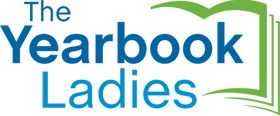(The following article appeared in our Discoveries magazine, Volume 13, Issue 2)
So how do we create enticing yearbook copy that readers will care about and still maintain journalistic standards?
The answer is easier than you may think; by using alternative copy treatments, we not only provide more ways to involve the reader, but we make the information provided more understandable as well.
If our copy is not being read, we are not doing enough to attract readers. And it is not just our imagination that long blocks of copy (even if they are superbly reported and written) tend to turn readers away.
In fact, the Poynter Institute, an institute for journalism with excellent information that promises “everything you need to be a better journalist,” has even conducted studies analyzing readers and their habits.
What they found was not surprising: Readers are more attracted to story packages, especially when they are accompanied by graphics, colored text and easy-to-read information. Adding images also increased readership.
And when interest increases, we are more likely to slow down and spend some time reading.

The Hawk, Pleasant Grove High School, Texarkana, TX
Finding New Ways To Tell The Story
Gone are the days when there was only one way to tell the story. It used to be that long-form narrative was the only accepted way to write yearbook copy. There was even a formula for “the right way” to write yearbook copy. Yearbooks today are filled with many different kinds of stories and lots of specific details and student voices.
Ways To Get Started
- Study well-designed and well-written alternative copy from magazines, brochures and webpages.
- Brainstorm ways to change the angle of your traditional coverage before you begin reporting for that spread.
- Work in teams to increase creativity and effectiveness. Putting the photographer, designer and writer together can result in more compelling coverage.
- Make alternative copy enjoyable for you and the reader while keeping it accurate and honest.

Rampages, Casa Roble High School, Orangevale, CA
Things to Use
- Introductory text to inform reader of copy’s purpose
- Accurate, specific information
- Story-telling, unique quotes
- Image-evoking nouns
- Strong action verbs
- Attention-grabbing leads
- “Said” instead of “commented,” “spoke,” “reflected,” etc.
- Visuals to clarify and add interest
Lists
- Checklists
- Glossaries
- By the Numbers
- Hot/Not
- Top Ten (or Five or…)
- Quizzes
- Did You Know?
- Can You Remember?
Infographics/Polls
- Charts and Graphs
- Ratings
- Timelines
- Breakdowns (of facts, numbers, etc.)
Personal Narratives
- Bios/First Person Stories
- Quotes
- Question and Answer
–Kathy Daly, HJ Special Consultant
